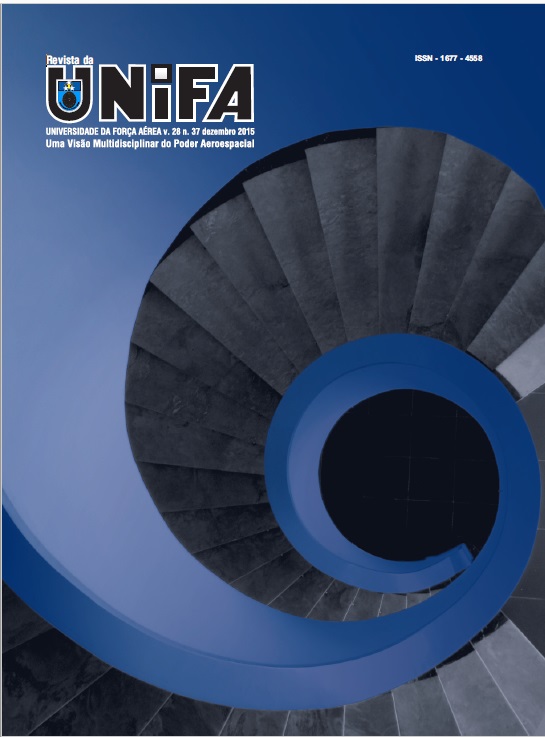Evolution of paradigms in aeronautical occurrences’ investigations
DOI:
https://doi.org/10.22480/revuinfa.%25y.v28.440Abstract
With the advancement of aeronautical sciences, new theories about air accident investigation became necessary to explain and promote the prevention of these occurrences. The theories that seek to explain the processes involved in aircraft accidents suffered developments, according to the different situations and development of aviation at different times, but there was not a total break. Heinrich (1931) published a theory concerned with the existence of an unsafe action next to the accident that should be prevented so that damage does not occur. This thought was represented by the domino`s model and was very important in the emergence of the following theories. Reason (1997) developed the theory of multiple causes, represented by the Swiss cheese model. According to this theory, in organizations there are latent conditions that act on the vulnerabilities of the defenses and, when aligned and attached to an active fault, cause the accident. As a result of the evolution of paradigms in the aviation occurrences investigations, the organizational aspects are considered in the investigation process and the prevention of aircraft accidents programs, as well as the identification of danger or threat. This concept underlies the management of risk, keeping it within an acceptable level compatible with the development of air activity. These developments paradigms in flight safety processes were analyzed in the light of the Kuhn (1991) theory about revolution of sciences, through consultation of the scientific articles, books and dictionaries.
References
BRASIL. Comando da Aeronáutica. Gabinete do Comando da Aeronáutica. Portaria n° 2.230/GC3, de 23 de dezembro de 2013. Aprova a reedição da NSCA 3-6 Investigação de Ocorrências Aeronáuticas com Aeronaves Militares. Boletim do Comando da Aeronáutica, Brasília, DF, n. 248, f. 12148, 30 dez. 2013.
______.Comando da Aeronáutica. Gabinete do Comando da Aeronáutica. Portaria n° 166/GC3, de 12 de fevereiro de 2014. Aprova a reedição da NSCA 3-13 Protocolos de Investigação de Ocorrências Aeronáuticas da Aviação Civil conduzida pelo Estado Brasileiro. Boletim do Comando da Aeronáutica, Brasília, DF, n. 034, f. 1285, 18 fev 2014.
______.. Decreto n° 24.749, de 05 de abril de 1948. Aprova o Regulamento para o Seviço de Investigação de Acidentes Aeronáuticos. Diário Oficial da União. Brasília, DF, 07 abr. 1948. Seção 1, p. 5523.
______. Decreto n° 57055, de 11 de novembro de 1965. Aprova o Regulamento para o Serviço de Investigação e Prevenção de Acidentes Aeronáuticos. Diário Oficial da União. Brasília, DF, 19 out. 1965. Seção 1, p. 10636.
______. Lei n° 12.970, de 8 de maio de 2014. Dispõe sobre as investigações do Sistema de Investigação e Prevenção de Acidentes Aeronáuticos – SIPAER e o acesso aos destroços de aeronave. Diário Oficial da União. Brasília, DF, 09 maio 2014. p. 1.
EBER, Dorothy H. Forgotten Flier. Sciences, v. 22, n. 4, p. 15-19, 1982.
HEINRICH, Herbert William. Industrial accident prevention: a scientific approach. first ed. New York: McGraw-Hill, 1931.
HOLLNAGEL, Erik. Barrier analysis and accident prevention. Aldershot, UK: Ashgatee, 2004.
INTERNATIONAL CIVIL AVIATION ORGANIZATION. Doc 9859: Safety Management Manual (SMM). 3. ed. Montreal, 2013.
INTERNATIONAL CIVIL AVIATION ORGANIZATION. Annex 19: Safety Management. Montreal, 2013.
KUHN, Thomas S. A estrutura das revoluções científicas. São Paulo: Perspectiva, 1991.
REASON, James. Managing the risks of organizational accidents. Burlington: Ashgate, 1997.
STOLZER, Alan J.; HALFORD, Carl D.; GOGLIA, John J. Safety management
systems in aviation. Burlington: Ashgate, 2008.
Published
How to Cite
Issue
Section
License
Copyright (c) 2022 The Journal of the University of the Air ForceRevista da UNIFA permite que o (s) autor (es) mantenha(m) seus direitos autorais sem restrições. Atribuição-NãoComercial 4.0 Internacional (CC BY-NC 4.0) - Revista da UNIFA é regida pela licença CC-BY-NC









